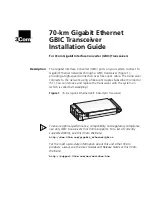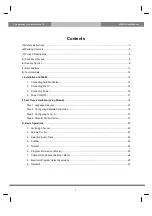
SATEL-TR4+
Integration Guide, Version 1.6
25
6.3
Sleep Mode
When being in sleep mode, the radio part of the module is switched OFF while the serial interface
communication related parts remain powered ON. The module will be automatically woken up
after the CPU senses a state change in the TD1 pin.
Example:
The module is in Sleep1- mode.
The module is woken up by sending a character or characters into the TD1 pin after which the
module responses
“
OK
”. After “
OK
” the module is ready for normal
communication.
To turn the module ON from Sleep1 mode:
1)
Issue a state change to TD1 (toggle pin (minimum pulse duration time 10 µs) or issue a
byte on the UART (for example 0x00))
2)
Wait for “OK”
-response from the module. The wake-up time is approx. 30 ms.
3)
Start communicating normally
Module will remain powered ON until a new sleep command is issued.
6.4
Power Save Mode
The Power save mode performs an automatic, self-adjusting receiver wake-up/sleep cycle.
It is designed for applications which base on one-way communication with relatively constant TX
interval and, in which the data packet separation is > 200 ms.
When enabled, the unit makes the
transmission interval study
basing on four (4) successfully
received data packets. The shortest time between transmitted packets is measured (
t
min
). Measured
value is updated after each successfully received data packet, so that possible changes in the
message length becomes noted.
Ensuring that the complete messages will be received even if there occur little variation in
transmission interval, some safety margin (
t
marg
) is left into Ready to receive from RF mode time.
Safety margin is calculated by dividing the shortest time between transmitted packets (
t
min
, in ms
)
with 8 and by adding 60 ms to this result:
t
marg =
tmin
8
+ 60 ms
The length of the whole sleeping period (
t
sleep
) is calculated by decreasing the shortest time between
transmitted packets (
t
min
) with safety margin (
t
marg
) and transmission time of the original message
(
t
TX
):
t
sleep
= t
min
− t
marg
− t
TX
Transmission interval study is started over always after 100 successful sleep/wake-up cycles and,
if the expected receiving slot (
t
RX slot
) with enhanced overlap margin (
t
overlap
) has been missed. In
latter case the package is considered to be lost.
















































